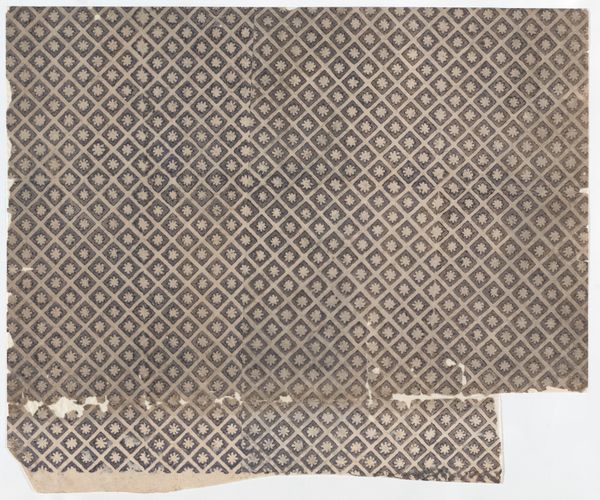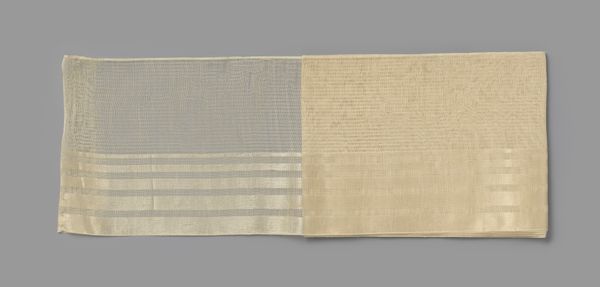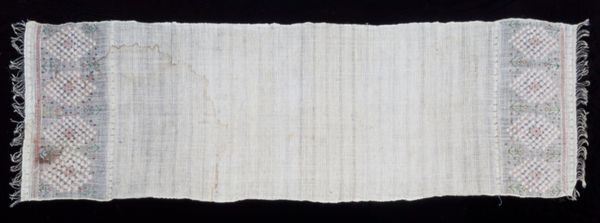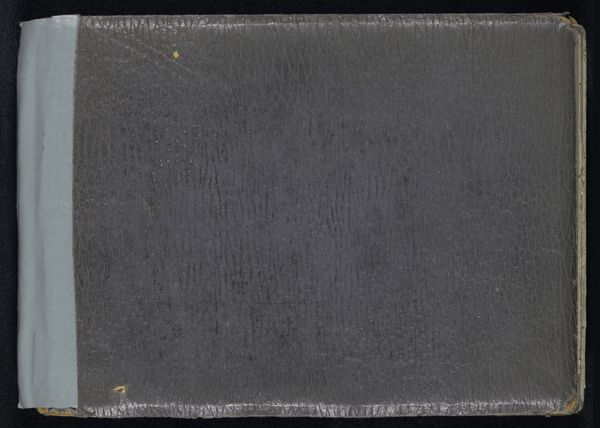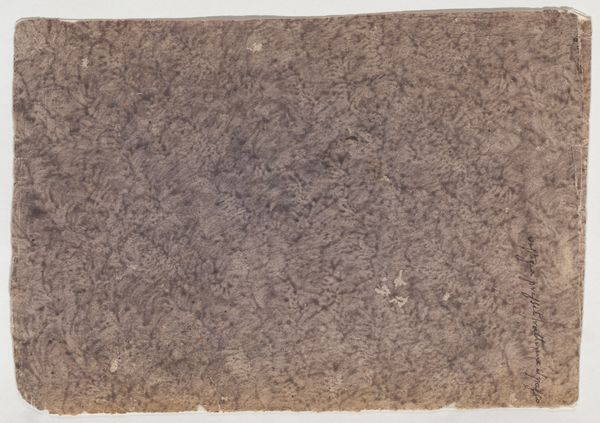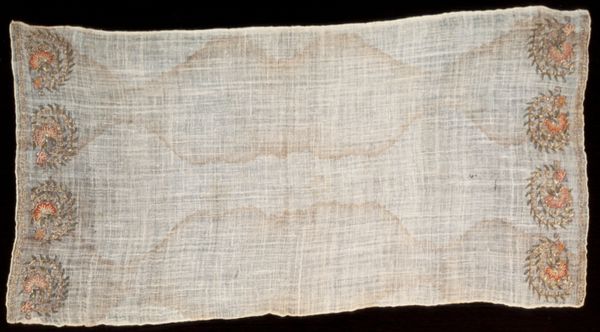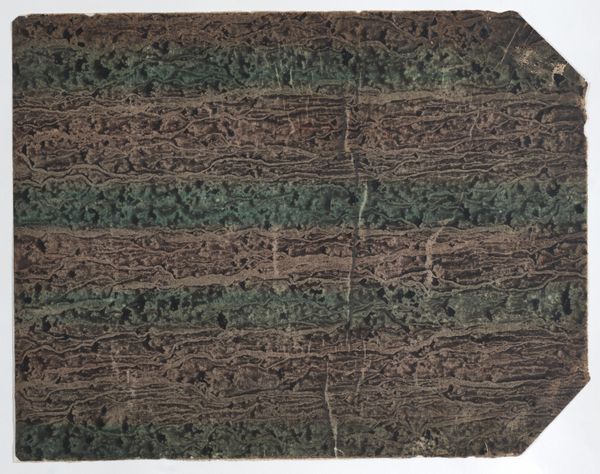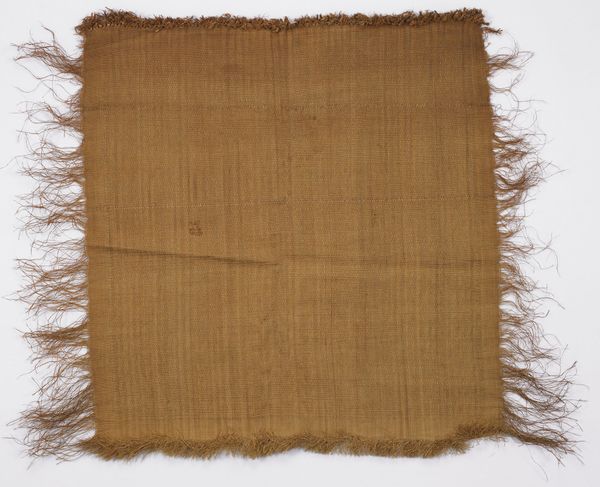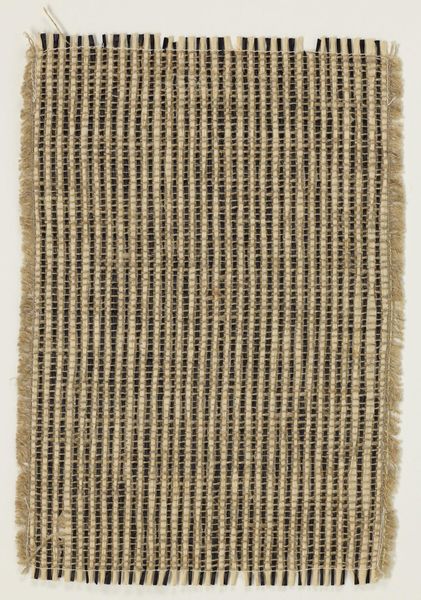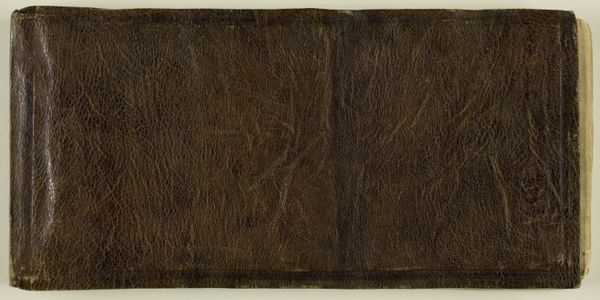
fibre-art, weaving, textile
#
fibre-art
#
textured
#
weaving
#
textile
#
abstraction
#
line
#
modernism
Dimensions: height 34 cm, width 98 cm
Copyright: Rijks Museum: Open Domain
Editor: So, this is a fragment of a textile by Willem Naarding, made around 1935. It’s described as hand-spun, undyed sheep’s wool. It’s got a really lovely, raw texture. What strikes you about this weaving? Curator: The emphasis on process is paramount here. Naarding’s choice to use hand-spun, undyed wool immediately directs our attention to the labor involved, and the inherent qualities of the material itself. In 1935, amidst rising industrialization, why champion this seemingly antiquated method? Editor: Maybe a rejection of mass production? A conscious choice to value the hand-made? Curator: Precisely! Think about the social context: mass-produced textiles were becoming readily available, potentially undermining traditional crafts. This piece, then, becomes a quiet act of resistance, a valuing of skill and material awareness. Consider how the texture isn't concealed, but rather celebrated. Does that change how we define art, perhaps challenging notions of “high” art versus craft? Editor: Definitely. The very deliberate use of undyed wool makes me think about authenticity and almost a return to the basics of weaving. How does its functionality play a role here? Is it art if it could also be utilitarian? Curator: That's key. Does the *potential* for use diminish its artistic value? Or does it instead broaden our understanding of art's role in daily life? Perhaps Naarding urges us to consider art not as separate from lived experience but fundamentally entwined with it, prompting critical reflection on labor, value, and our relationship with the natural world. Editor: That's fascinating. I hadn't considered its social commentary so directly. Curator: And I appreciate your point about returning to basics. This piece is simple, yet loaded with meaning about production and social norms. It pushes boundaries, doesn't it?
Comments
No comments
Be the first to comment and join the conversation on the ultimate creative platform.
